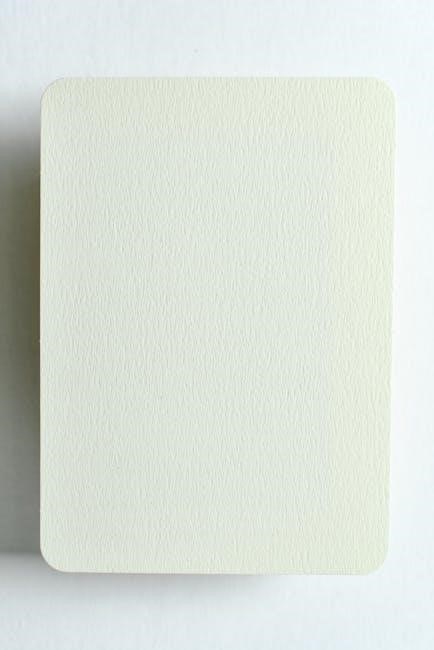Graphic design principles are the foundation of visual communication, guiding how elements like text and images convey messages effectively. They ensure balance, contrast, and alignment, creating cohesive designs that engage audiences and deliver clear communication.
1.1 Definition and Importance of Graphic Design Principles
Graphic design principles are the rules that govern the organization of visual elements to communicate messages effectively. They include balance, contrast, alignment, repetition, and proximity, ensuring designs are visually appealing and professional. These principles guide the creation of cohesive compositions, making information clear and engaging. By applying these principles, designers can enhance communication, capture attention, and convey ideas with precision, making them essential for effective visual storytelling and professional design outcomes.
1.2 Brief History of Graphic Design and Its Evolution
Graphic design has evolved significantly since ancient times, with early forms seen in cave paintings and Egyptian hieroglyphs. The Industrial Revolution brought mass production techniques, while the 20th century introduced movements like Art Nouveau, Bauhaus, and Modernism, shaping modern design principles. Digital tools transformed the field, enabling precision and creativity. Today, graphic design is a dynamic, ever-evolving discipline, blending traditional aesthetics with cutting-edge technology to communicate ideas effectively across various mediums.

Core Principles of Graphic Design
Core principles like balance, contrast, alignment, repetition, and white space form the backbone of effective graphic design, ensuring visual harmony and clear communication.
2.1 Balance in Composition
Balance in graphic design refers to the distribution of visual elements to create stability and harmony. It can be achieved through symmetrical, asymmetrical, or radial arrangements. Symmetrical balance mirrors elements on either side of a central axis, while asymmetrical balance uses contrasting elements to create equilibrium. Radial balance radiates elements from a central point, adding dynamism. Effective balance ensures the design is visually appealing, engaging, and professional, guiding the viewer’s eye through the composition seamlessly.
2.2 Contrast and Its Impact on Visual Hierarchy
Contrast is a powerful tool in graphic design that distinguishes elements, creating visual interest and guiding the viewer’s attention. By using differences in color, size, typography, and texture, contrast establishes a clear visual hierarchy. This hierarchy directs the eye to key elements, enhancing readability and focus. Effective contrast ensures that important information stands out, while secondary elements recede, making the design both functional and aesthetically engaging. It is essential for communicating priorities and improving user experience in any visual composition.
2.3 Emphasis and Focal Points in Design
Emphasis in graphic design refers to the process of drawing attention to specific elements to guide the viewer’s eye. Focal points are the primary areas of interest that dominate the composition. By using size, color, placement, and contrast, designers create visual hierarchy, ensuring key messages stand out. A strong focal point enhances communication, engages the audience, and directs their attention to the most important content. Balancing emphasis with simplicity prevents overwhelming the viewer, ensuring a clear and impactful design that meets its intended purpose effectively.

2.4 Movement and Rhythm in Graphic Design
Movement in graphic design creates a sense of energy and flow, guiding the viewer’s eye through the composition. Rhythm is achieved through repetition of shapes, colors, or lines, establishing a tempo that engages the audience. These principles work together to create dynamic designs, ensuring visual interest and a seamless narrative. By incorporating movement and rhythm, designers can evoke emotions, convey action, and enhance user engagement, making the design more interactive and memorable while maintaining balance and harmony in the overall layout.
2.5 Pattern and Repetition Techniques
Patterns in graphic design involve repeating elements like shapes, lines, or colors to create visual interest and harmony. Repetition reinforces consistency and unity, drawing attention and establishing brand recognition. These techniques can form intricate or simple designs, enhancing emotional engagement. Patterns and repetition guide the viewer’s eye, creating a cohesive and balanced visual flow that strengthens the design’s overall impact and message, making it both effective and visually appealing while maintaining clarity and purpose in the composition.
2.6 Unity and Harmony in Design
Unity and harmony in graphic design ensure all elements work cohesively, creating a seamless visual experience. This principle unifies diverse components like color, typography, and imagery through consistent styles and balanced composition. Harmony is achieved when elements interact pleasingly, guiding the viewer’s eye and conveying a clear message. Techniques like repetition, alignment, and proximity help maintain unity, resulting in a balanced and professional design that engages the audience effectively while ensuring clarity and visual appeal in the overall composition.
2.7 White Space and Its Role in Effective Design
White space, also known as negative space, is a crucial element in graphic design that enhances readability and visual appeal. It creates a clean layout by separating text, images, and other elements, reducing clutter and guiding the viewer’s focus. Proper use of white space improves comprehension, highlights key elements, and ensures a balanced composition. It is essential for modern, minimalist designs, contributing to a professional and uncluttered aesthetic while making content more accessible and engaging for the audience. Effective white space usage is vital for clear communication.

Elements of Graphic Design

Graphic design elements include line, shape, form, texture, color, and space. These fundamental components create visual compositions, enabling effective communication and aesthetic appeal in designs.
3.1 Line, Shape, and Form in Graphic Design
Lines, shapes, and forms are foundational elements in graphic design. A line is a continuous mark with length and width, used to create movement or define boundaries. Shapes are self-contained areas, such as squares or circles, often used for structure or emphasis. Form refers to three-dimensional objects, created through shading and perspective. These elements work together to create visual interest, establish hierarchy, and guide the viewer’s eye through a design, enhancing both functionality and aesthetic appeal.

3.2 Texture and Its Application in Visual Design

Texture adds depth and tactility to graphic designs, creating visual interest and emotional engagement. It can be physical, like rough paper, or visual, such as digital patterns. Texture helps differentiate elements, guides the eye, and enhances the overall design by adding complexity and realism. Whether smooth, rough, matte, or glossy, texture plays a crucial role in making designs more dynamic and immersive, influencing how viewers perceive and interact with the visual content.

3.3 Color Theory and Its Psychological Impact
Color theory is a cornerstone of graphic design, shaping moods and emotions through strategic use of hues, saturation, and contrast. Colors evoke psychological responses—red stimulates energy, blue conveys trust, and green suggests harmony. Designers leverage color harmony principles, such as complementary and analogous schemes, to create visually appealing compositions. Understanding color psychology enables designers to align palettes with brand identities, ensuring messages resonate effectively with target audiences and enhance visual communication.
3.4 Space and Its Contribution to Composition
Space, often referred to as white space, is a critical element in graphic design, enhancing readability and visual balance. It creates breathing room, guiding the viewer’s eye through the composition. Effective use of space prevents clutter, ensuring focus on key elements. Negative space can also be used creatively to convey meaning. Proper spacing improves hierarchy, makes designs cleaner, and ensures a professional finish, ultimately contributing to a more engaging and organized visual experience.

Real-World Applications of Graphic Design Principles
Graphic design principles are applied in branding, web design, advertising, and motion graphics, enhancing visual communication and user engagement across various industries and digital platforms effectively.
4.1 Branding and Identity Design
Branding and identity design rely heavily on graphic design principles to create memorable and cohesive visual identities. Through the strategic use of color, typography, and imagery, brands establish recognition and convey their values. Consistent application of design elements ensures a unified brand image across all platforms. Effective branding uses contrast, alignment, and repetition to make logos, packaging, and marketing materials stand out. These principles help build trust and emotional connections with audiences, making branding a powerful tool for business growth and customer loyalty.
4.2 Web and Digital Design
Web and digital design applies graphic design principles to create engaging online experiences. Responsiveness is key, ensuring designs adapt to various screen sizes. User experience (UX) and user interface (UI) design focus on clarity and ease of navigation. Visual hierarchy guides users’ attention, while contrast and alignment enhance readability. Digital designs often incorporate animation and interactivity, using principles like movement and rhythm to captivate audiences. Accessibility is also crucial, ensuring designs are usable by everyone. These principles work together to create functional and visually appealing websites and digital platforms.
4.3 Print Media and Advertising
Print media and advertising rely heavily on graphic design principles to capture attention and convey messages effectively. High-resolution imagery and precise typography are essential for professional output; Contrast, alignment, and repetition are used to create visually striking ads that stand out. White space is strategically employed to avoid clutter, ensuring the key message is clear; Color theory plays a significant role in evoking emotions, while balance ensures the layout is aesthetically pleasing. These principles combine to create impactful campaigns that engage audiences and drive results in print media.
4.4 Motion Graphics and Animation
Motion graphics and animation bring static designs to life, using principles like movement and rhythm to create dynamic visual experiences. Contrast and emphasis guide the viewer’s eye, while repetition and alignment maintain consistency. These designs often incorporate storytelling techniques to engage audiences emotionally. Timing and pacing are crucial, ensuring smooth transitions and clear communication. Motion graphics blend technical skill with creative vision, making them a powerful tool in modern media and digital storytelling.

The Psychological Impact of Graphic Design
Graphic design deeply influences emotions and perceptions, with color theory and contrast shaping mood and engagement. Effective designs create memorable experiences, guiding user perception and fostering connection.
5.1 How Design Principles Influence User Perception
Design principles significantly shape user perception by organizing visual elements to communicate messages effectively. Contrast creates visual hierarchy, guiding the eye, while alignment and repetition establish structure, making designs more professional. Color theory evokes emotions, influencing how users feel about a brand or message. These principles ensure clarity, enhancing credibility and engagement. By applying balance, unity, and white space, designs become intuitive, directing focus and improving overall user experience, making design principles indispensable in shaping user perception and interaction with visual content.
5.2 The Role of Color and Contrast in Emotional Engagement
Color and contrast are powerful tools in graphic design, evoking emotions and capturing attention. Colors like red can stimulate excitement, while blue conveys trust, directly influencing emotional responses. Contrast enhances readability and visual hierarchy, ensuring elements stand out. By strategically using color theory and contrast, designers create engaging experiences, guiding users’ emotions and perceptions. These principles ensure designs resonate deeply, making color and contrast essential for crafting emotionally impactful and memorable visual communication.
5.3 Creating Memorable Experiences Through Design
Memorable experiences in graphic design are crafted by combining emotional resonance with functional simplicity. By aligning design principles like contrast, repetition, and color theory, designers create visually cohesive and impactful compositions. These elements guide user engagement, making designs intuitive and aesthetically pleasing. When executed well, such designs leave a lasting impression, fostering brand loyalty and user satisfaction. The interplay of these principles ensures that designs are not only functional but also emotionally resonant, creating memorable experiences for audiences.